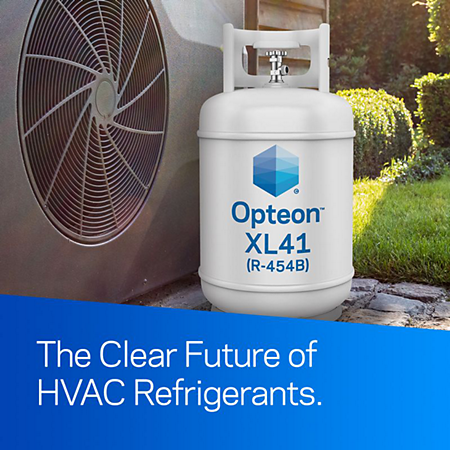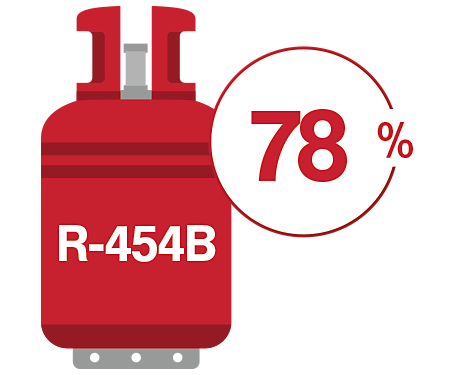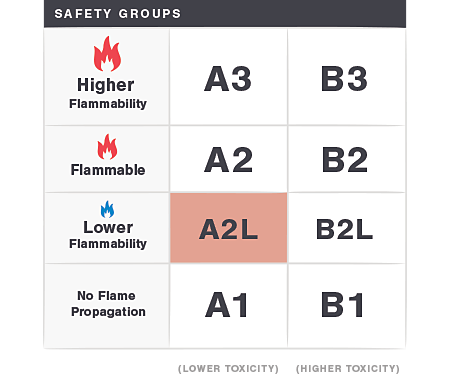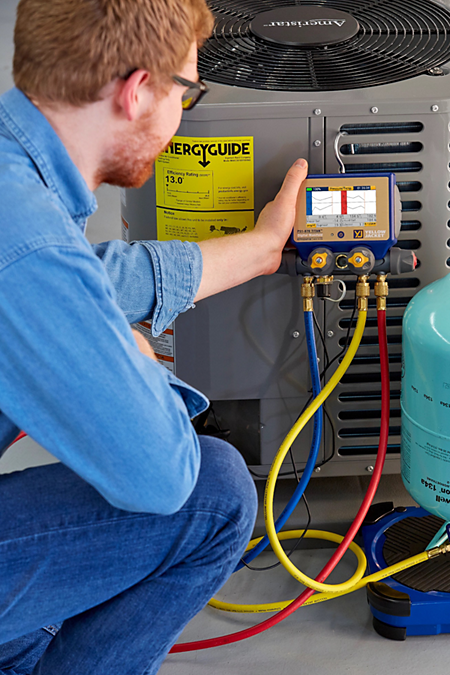Refrigerant Regulations Are Coming
Posted by www.Bakerdist.com on 18th Jul 2024
What’s Changing And New Requirements
THE PHASEDOWN OF HFC REFRIGERANTS IN THE HVAC INDUSTRY IS WELL UNDERWAY
The Environmental Protection Agency (EPA) has mandated massive cuts to the GWP (Global Warming Potential) that will eliminate the use of R-410A in new HVAC equipment. These changes take effect on January 1, 2025. Under these regulations, the use of higher GWP refrigerants like R-410A will be phased down in order to reduce greenhouse gas emissions and will result in a changeover to A2L rated refrigerants including R-454B.
BENEFITS OF THE A2L (R-454B) CHANGEOVER:
- 78% reduction in GWP relative to R-410A
- Improved capacity and efficiency compared to R-410A
- Excellent performance in normal and high ambient conditions
- Physical properties very close match to R-410A – easily convertible from R-410A designs
- Very low temperature glide – can be topped off after leaks
- Enables higher charge sizes compared to other flammable refrigerants
- Miscible with polyolester (POE) lubricants
NEW REGULATIONS APPLY TO:
- Residential, light commercial, and commercial positive displacement
- Direct expansion (DX) chillers and air conditioning (AC)
- Heat pumps and chillers
- Mini-split, multi-split and ducted-split units
- Window units and portable AC
- Packaged Terminal Air Conditioners (PTACs)

What Are A2L Refrigerants?
Named for their ASHRAE safety classification, A2L classified refrigerants such as R-454B are characterized by mild flammability, low toxicity, and low global warming potential (GWP). They include hydrofluoroolefins (HFOs) and HFO blends. A2L refrigerants offer similar operating characteristics to legacy refrigerants, a safer profile than ammonia and hydrocarbon refrigerants, and are more energy efficient than R-410A and transcritical CO2 systems. Learn more

Matching R-410A With The Lowest GWP
With a 78% reduction in global warming potential GWP v. R-410A, R-454B is the optimal solution to meet the long-term HFC phase down needs. R-32 may provide a lower charge size depending on system design, but calculations show that the aggregated CO2 emission reduction of R-454B is greater and offsets the charge size difference. The lower GWP of R-454B provides greater value and peace of mind as the industry transitions to more sustainable solutions.

Low Flammability, Balanced Solution
As an A2L refrigerant, R-454B offers a balanced solution to both environmental and safety considerations. Its favorable properties help to minimize risks associated with flammability, so you can feel confident working with it. Its lower flammability allows it to be used in a broad range of ACR applications. Best practices that you've used for years will still be used with R-454B.

Opteon XL41 (R-454B). The Optimal Solution.
Why Leading OEMs Are Choosing Opteon™ XL41 as Their R-410A Replacement.
Harder to Ignite. Safer to Use
Opteon™ XL41 is NOT hydrocarbon-based, meaning it's less likely to form flammable concentrations in the air than highly flammable refrigerants. In fact, many common electrical components used today in the HVAC industry can’t ignite XL41.
Feels Like Working with R-410A
Because Opteon™ XL41 is a very close performance match to R-410A, the installation and service procedures will be similar. The same types of best practices in use today with R-410A can be used with Opteon™ XL41.
No Need to Replace Entire Toolset
Many of the existing tools in use with R-410A will be compatible with Opteon™ XL41 systems. Additionally, lubricants commonly used with R-410A will be compatible with Opteon™ XL41 due to similar miscibility and viscosity.

What Does The Change To R-454B Mean For Service Technicians?
Switching to R-454B should be a relatively easy transition because it operates at temperatures and pressures similar to those of our current R-410A refrigerant. While final details and state adoptions are still being worked out, new safety standards have been established and are pending for adoption into future building codes. The Air-Conditioning, Heating and Refrigeration Institute (AHRI) is leading a Safe Refrigerant Transition Task Force to work with code bodies to develop requirements for:
- Installation, operation and maintenance
- Bulk storage/manufacturing facilities
- DOT, shipping, packaging, handling, and warehousing
- Communications

